How to Propagate Philodendron (9 Expert Tips)
-
Pete Ortiz
- Last updated:

In gardening, propagation is a very common practice. And, as far as the most popular indoor/ornamental flowering plants go, philodendrons are in the top 10. They are sturdy and resilient, flourish in different soil types, and prefer indirect light. Now, if you already have some philodendrons but aren’t sure how to propagate them, this guide is for you!
Our experts made a list of the most useful tips and tricks to keep in mind when cultivating these lovely plants. And we’re happy to share them with you! So, read on and learn about the best techniques for cutting philodendrons and growing them in soil and water. After that, we’ll talk about watering, temperature, soil pH, and sun requirements. Let’s get to it!
| Botanical Name | Philodendron |
| Soil Type | Well-drained, moist, moderately rich |
| Soil pH | 5.0–6.0 (slightly acidic) |
| Sun Exposure | Indirect, bright light |
| Watering Requirements | Low, once in 1–2 weeks |
| Ideal Temperature | 65–85° Fahrenheit |
| Humidity Levels | 60–70% (above average) |
| Hardiness Zone | 8–11 USDA |
| Blooming Time | May to July |
Philodendron Plants: Key Characteristics
A go-to indoor and outdoor plant in the US, philodendrons bear flowers and fruits, bloom in early May to late July, and grow best in warm climates (8–11 USDA). A larger genus in the Araceae family, the philodendrons plants are, in some ways, a mystery and include quite a few undescribed species. Now, according to the World Checklist of Selected Plant Families, there are 489 philodendron types1 out there.
In Greek, Philo means love2, while Dendron stands for a tree, which makes philodendron the love tree. Mature plants reach 1–3 feet in height and 1–6 feet in width. The foliage is mostly green but can also be blue, gray, silver, gold, and even dark purple. Many philodendrons start as vines and then slowly turn into epiphytes3 and grow on other plants. They can be both vining and non-climbing.
The 9 Tips for Propagating Philodendrons
1. Don’t Use Long Cuttings
Philodendron propagation might seem like a lot of work, but it’s actually quite a straightforward process. All you’ll have to do is buy cuttings from a local store, plant them in water or soil, and watch the plant grow. Or, if you have a philodendron growing in the backyard or indoors, it would be better to take cuttings from your own plant. The most important thing here is to get the right size.
There’s a common misconception that the longer the cutting, the better. However, the ideal length is 5–6 inches, and the cutting needs to have 2–3 leaves. Also, when making the cut, see that you’re trimming just above the node. Get rid of the leaves in the lower half of the stem to root it properly. You’ll find the nodes near the leaves. Cut at a 45° angle for the best results.
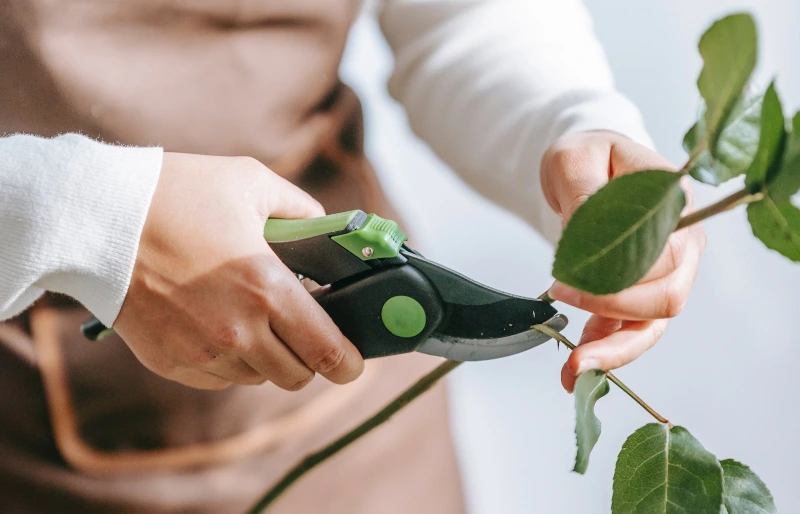
2. Try Leaf-Bud Cutting and Root Division
Stem cuttings are not the only option on the table. You can also use the leaf-bud cutting technique4. Find a strong, healthy stem, and cut it, but make sure the stem has a petiole, axillary bud, and, most importantly, a leaf on it. Don’t think about the nods right now: focus on the bud. Next, put the cutting in potting soil (mixed with some perlite) and water generously.
The stem should be hidden underneath the soil, with the leaf sticking out to absorb sunlight. This method is preferred for crawling philodendrons. Root division is another popular propagation method. This time around, you’ll need to remove the entire philodendron plant from the pot and cut it into different parts. Make sure each section has its fair share of roots. Then, just move them into different pots.
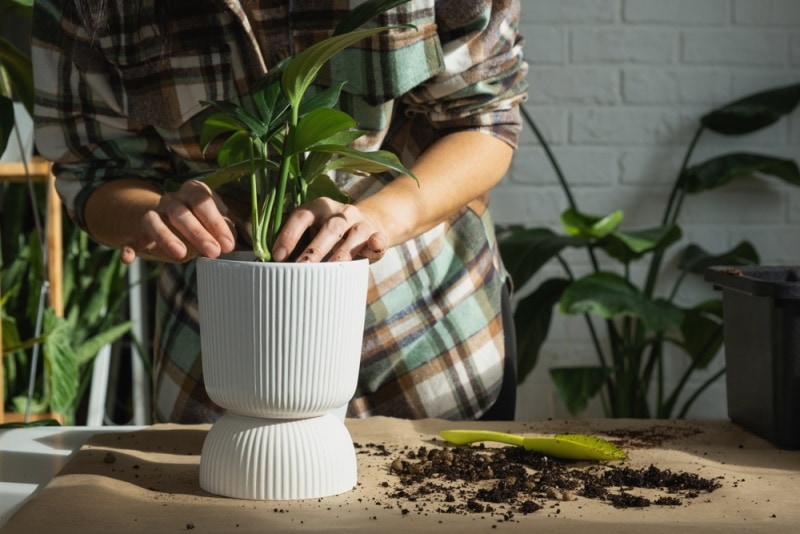
3. Go With Air Layering if the Plant Is Expensive
If you’re the proud owner of a fancy philodendron species and this is your first time trying to propagate it, air layering will be your best bet. This technique doesn’t involve any cutting, so there won’t be a risk of ruining the plant. Air layering is when you warp one of the stems with damp moss using cling film and encourage it to grow new roots from a node. The more nodes the stem has, the better.
When wrapping the moss around it, see that the film isn’t too tight. New roots won’t appear in a day or two: it’s a rather long process and takes up to a month. So, be patient! And when the roots do start poking through, you can cut the stem and move it to an all-new pot.
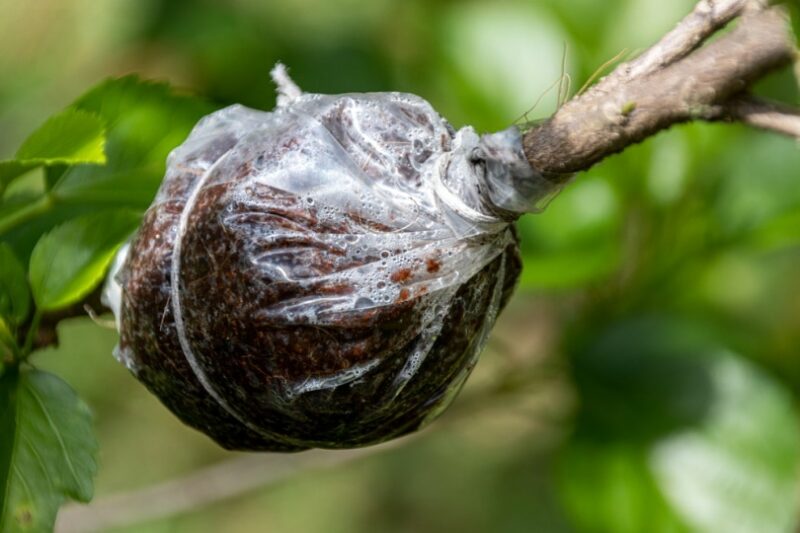
4. Change the Water Frequently
The easiest and safest way to propagate philodendron is to put it in water. For that, use a bowl or jar. The key to successful water propagation is to change it frequently. Do that at least once in 2–3 days. Now, it usually doesn’t take this plant long to grow roots from a cutting. On average, you should start seeing them in 2–3 weeks or even earlier.
Another thing to keep in mind: the nodes should be fully submerged in water. Otherwise, the cutting might wither, or, at the very least, the lack of water will stall growth. Put the jar in a spot where the philodendron will get indirect sunlight. Continuous exposure to direct sun will burn it. Full shade, in turn, will hinder growth. So, yes, it’s important to find the golden middle here.
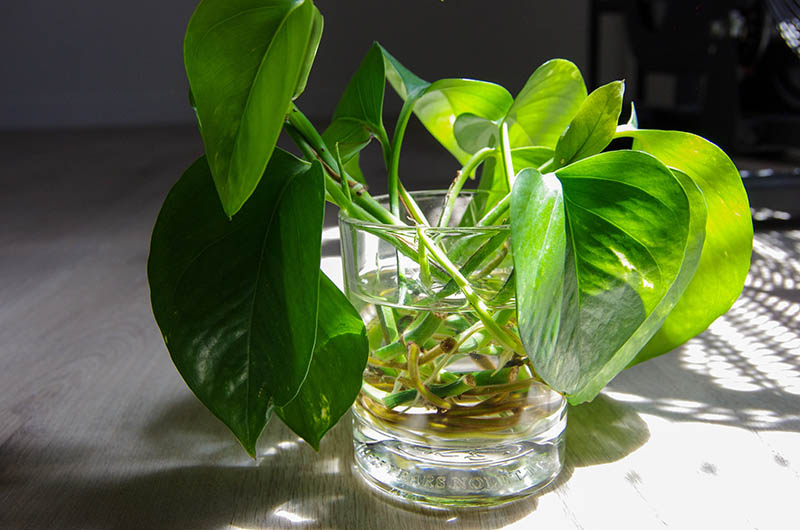
5. Make Holes in the Pot
You don’t necessarily have to start by growing the cuttings in water. Philodendron is often planted directly in the soil, too. But again, it will be easier to cultivate it in a jar and then move it to a pot. In any case, the pot should be large enough to avoid root binding. Next, see that it has a decent number of holes for drainage. Putting a couple of stones at the bottom will help with that.
Upon planting the cutting, water it generously. The philodendron is one of the fastest-growing plants for indoor and outdoor use. When taken care of properly, it can grow up to 3–4 inches per week during the hot days (spring through summer). As the vines get bigger, they’ll start developing leaves and even aerial roots. Once they get long enough, you can make new cuttings.
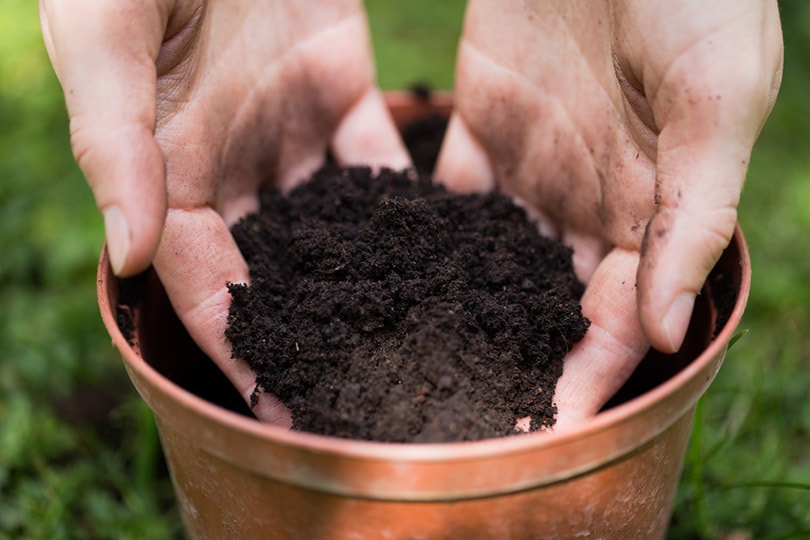
6. Feed the Roots With Hormones
As the name suggests, rooting hormones are specifically formulated to help the roots grow deeper and stronger. There are lots of commercial products out there, and they do a decent job of helping fresh cuttings develop roots. Now, a rooting hormone is a chemical that stimulates growth5 at no harm to the plant. It’s available as a liquid, powder, and even gel.
The hormone serves as a synthetic substitute for auxins, a class of plant hormones. And you’ll need to add it before planting the cuttings. Not ready to pay for it yet? That’s okay—you can always go with cinnamon. While it’s not the most effective fungicide on the planet, cinnamon can, indeed, keep the roots healthy and stimulate growth. Cinnamon powder is easier to use, but oil will work as well.
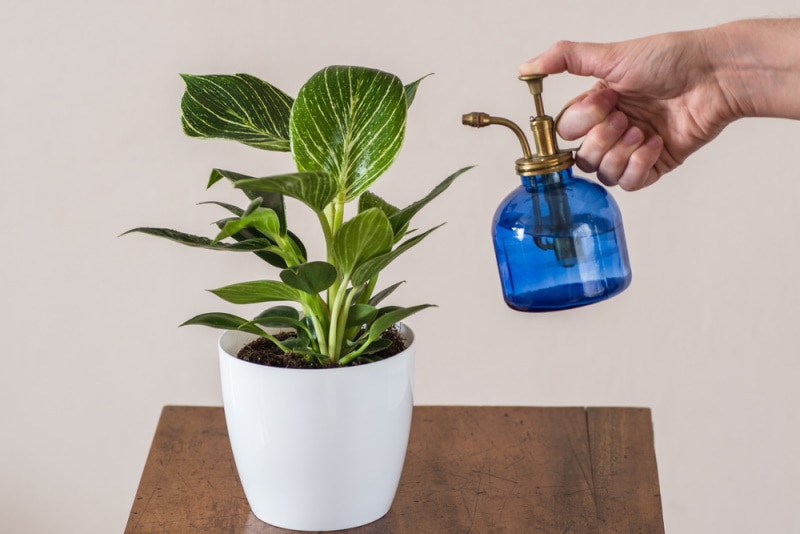
7. Cover the Cuttings
To recap: first, make the cuts. After that, grab a container, fill it with potting soil, and add some water until it gets adequately moist. For easy fitting, use a pencil or a pen to make small holes in the soil. With that out of the way, add some rooting hormone to the bottom of each cutting (a tiny bit will be enough) and stick them into the soil.
What you should do next is cover the cuttings. This is done to prevent the moisture from escaping and to establish optimal temps for the philodendrons to grow. Plastic wraps are perfect for this. Container covers will also do. Essentially, the goal is to build a makeshift greenhouse that will protect the cuttings from the sun and other environmental factors.
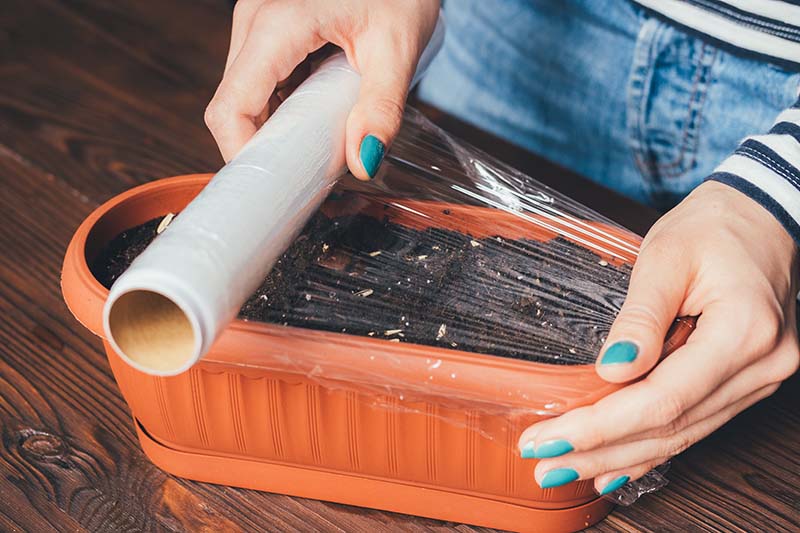
8. Keep the Pests at Bay
One of the best things about philodendrons is that they’re tough and resistant to most bugs. However, spider mites, aphids, and mealybugs can still pose a threat. Usually, they appear when you leave the plant unattended for a couple of weeks or a month. Thankfully, these pests aren’t hard to deal with. A soapy water solution sprayed over the plant and the soil should do the trick.

9. Prune/Cut the Plants in Spring or Fall
In contrast to most indoor flowering plants, philodendrons won’t benefit from frequent pruning. Instead, we recommend doing it once a year, preferably in spring or fall. Keep your eye on the plant. If it’s getting leggy or outgrowing the pot, that means some trimming is in order. You can use this opportunity to make new cuttings and start growing them in separate containers.
Also, always sterilize the scissors or shears before you do any cutting. Rubbing alcohol is a safe bet. Start by cutting out the dead leaves. With them gone, the plant will grow faster. Do the same with the yellowish and leafless stems. When you’re done, water the philodendron to stimulate growth.
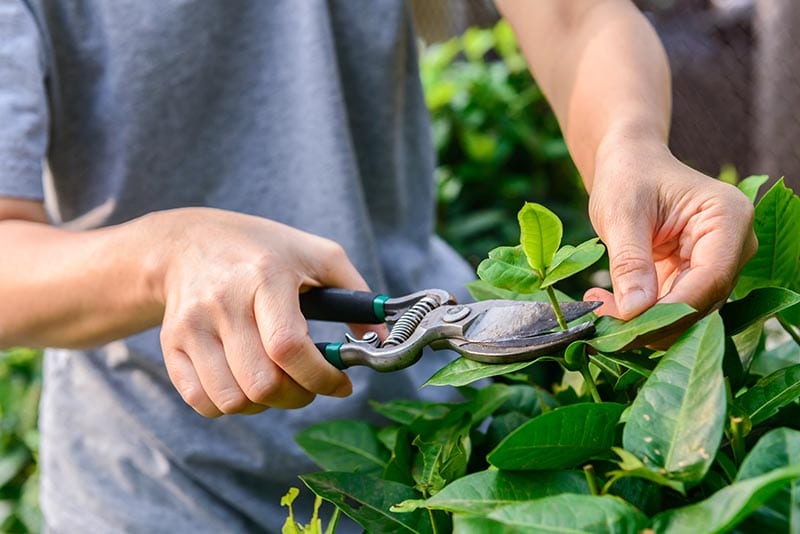
How to Grow Philodendrons: A Detailed Guide
Alright, now that we’ve covered the ins and outs of propagation, let’s talk about creating the perfect environment for philodendrons. Does the soil have to be moist or dry? What’s the best temperature for growing these lovely plants? Here’s a quick look at the key factors to keep in mind while cultivating philodendrons:
- The soil. These flowers are mostly found in rainforests, so if you want to grow them indoors, go for well-drained, yet moist and moderately rich soil. Moving on to the pH, slight acidity (5.0–6.0) is the way to go here. Philodendrons can survive in different types of soil, but they’re weak against salt build-up. So, change the soil once every 2–3 years.
- Philodendrons grow rather quickly and rely heavily on nutrients to flourish. During the growing season, you should fertilize the soil at least once a month. They won’t need nearly as much of it during the dormant months, though: only add fertilizer once in 1.5–2 months.
- Sun exposure. In contrast to most indoor plants, philodendrons aren’t big fans of direct exposure. The sun will burn their leaves (they’ll turn yellow) if you leave philodendrons out in the open for too long. So, make sure they get bright, yet indirect light in the morning: go for east or south-facing windows.
- On the hot summer days, water the plants at least once a week. But, as soon as it gets a bit colder outside, you can switch to a two-week routine. To avoid overwatering and rot, check the soil before you add a single drop of water. The top of the soil needs to be dry between watering sessions.
- Temperature and humidity. During the day, 75–85°F is the perfect temperature; the night temps are a bit lower, at 65–70°F. And what about humidity levels? Try to keep them slightly above the average (60–70%). Philodendrons are hardy to zones 8–11, by the way, and can’t handle temperatures below 55°F.
Are Philodendrons Edible? How Long Do They Last?
The short answer is no because young philodendron fruits are poisonous. While you can, technically, swallow them, the side effects can be quite severe. We’re talking about swelling of the lips, mouth, tongue, and even throat. As a result, it will become much harder to talk, swallow, or even breathe. This is especially true for small children. So, keep philodendrons away from your kids’ and pets’ reach!
In contrast, ripe fruits don’t contain any poison, but we’d still recommend against eating them. There are so many different types of philodendron plants out there that it may be hard to figure out whether the fruits are edible or not. As for the average lifespan, indoors, philodendrons last for 20–40 years, depending on the species. Outdoors, they often go above the 100-year mark.
Conclusion
You don’t have to be a seasoned gardener to propagate philodendrons. As long as you have cuttings of the right size and use a big enough pot, cultivating these plants won’t be a drag. And if you prefer to propagate them in water, make sure to change it often to stimulate growth. Philodendrons have quite an impressive lifespan, which makes your efforts even more worth it.
They are tough and don’t need “babysitting” to survive. Even if you forget to water them for a week or two or rob the plants of sunlight, they won’t wither away or succumb to diseases. Above all, philodendrons are beautiful and are a perfect pick for ornamentation inside and outside the house!
- Com – Plant – Philodendron
- Edu – Split-Leaf Philodendron
- Health.GLD.Gov.Au – Philodendron Plant
- Com – Fabulous Philodendrons
- Com – Best Philodendron Soil Mix
- Edu – Philodendron
- Edu – Heartleaf Philodendron
- Com – Propagate Philodendron
- Com – Philodendron
- Com – Philodendron Propagation
- Com – Propagate Philodendron
- Gov – Cinnamon as a Useful Preventive Substance
- Science.Kew.Org – Philodendron
- Nature.Com – Auxin In Action
Featured Image Credit: Foto2rich, Shutterstock
Contents



